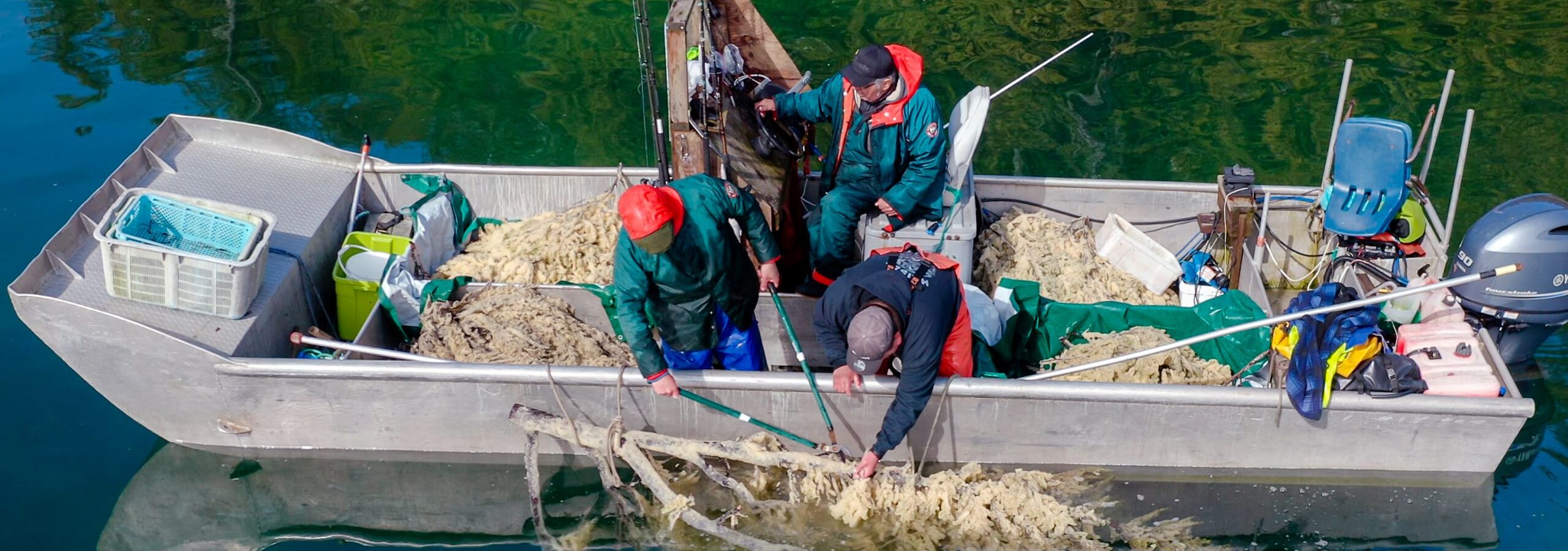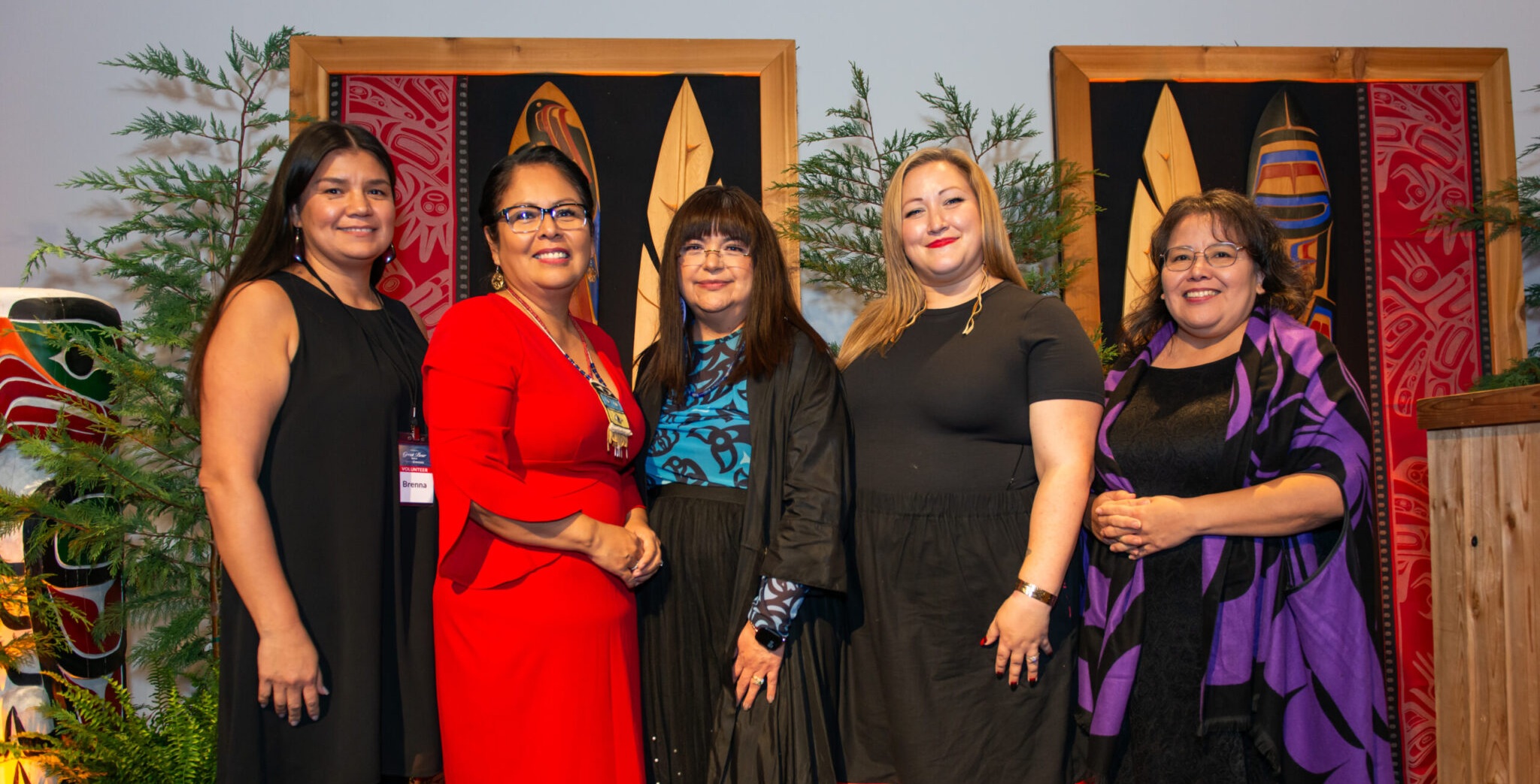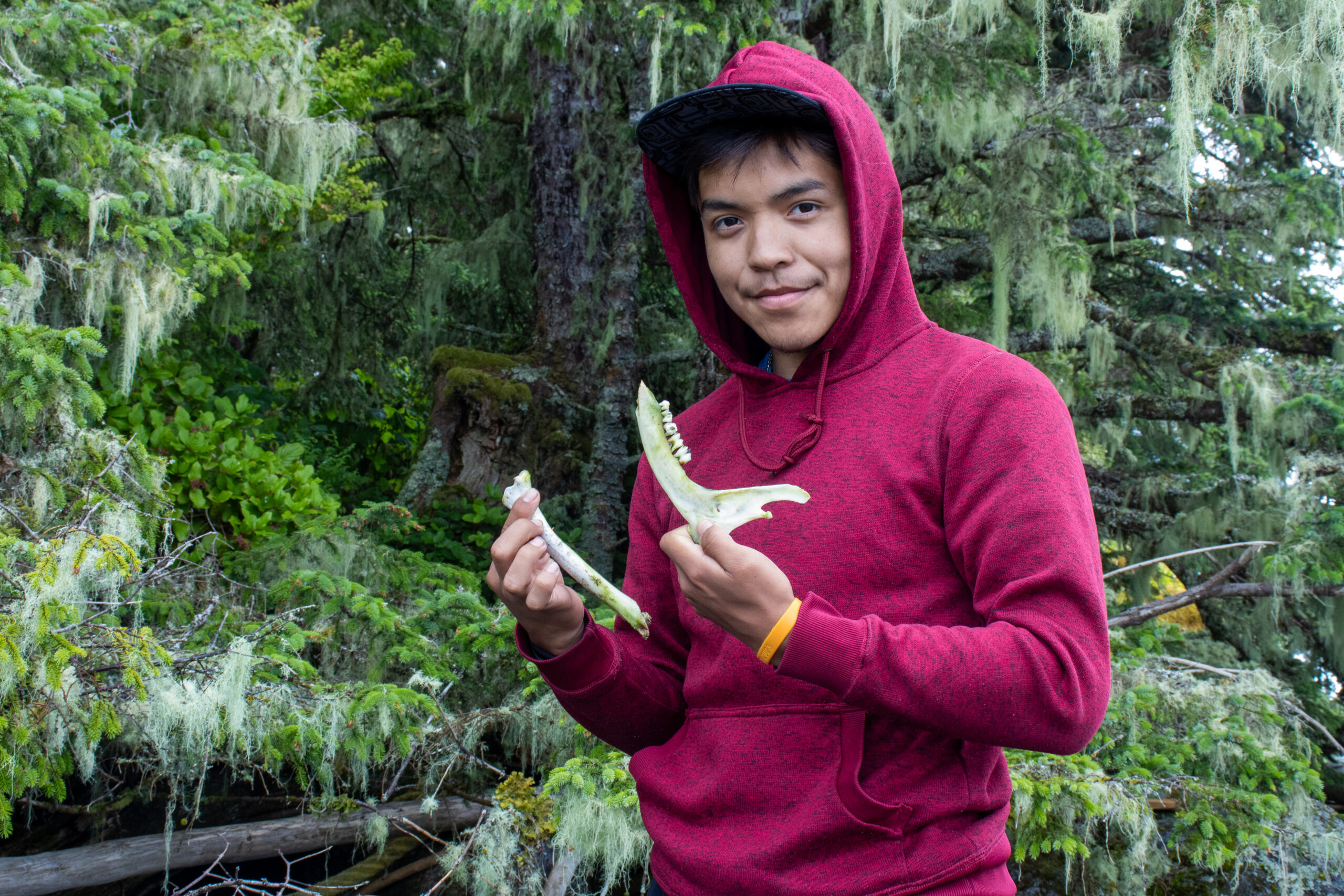The Kitasoo Xai’xais Nation has declared a first-of-its-kind Marine Protected Area (MPA) for Gitdisdzu Lugyeks (Kitasu Bay), a sacred area in the heart of their traditional territory, significant to the community’s health, culture and economy.
Gitdisdzu Lugyeks is a permanent 33.5-square-kilometre ocean protection zone in Kitasoo Xai’xais traditional territories near Laredo Sound, 500 kilometres north of Vancouver.
“We know these lands and waters better than anyone, Kitasu Bay has been part of our home for thousands of years through to the present day. The coast is our lifeblood,” says Hereditary Chief Nies’los (Kelly Robinson) in a press release from the Nation made publicly available on June 22.
The Kitasoo Xai’xais community celebrated the announcement of the declaration in their home community of Klemtu on June 21, Indigenous People’s Day.
‘WE’VE BEEN HERE FOR THOUSANDS OF YEARS’
The MPA, which includes an official declaration and 36-page management plan, aims to strengthen coastal conservation, marine productivity, local food security, and ultimately protect sea life — seabirds, whales, salmon, cod, halibut, shellfish and kelp forests — for generations to come.
“It’s a really special place, a very sacred place for the community,” says elected Chief Councilor Doug Neasloss, who’s also his Nation’s stewardship director. “We have a long history of defending that area. We have a lot of knowledge and we want to be able to share it.”
The community stood up against logging in the area at Kitasu Hill in the 70s to protect some of the biggest and last spruce and cedar trees, and then again in 2014, to shut down a herring fishery that would devastate a just-recovering stock, Neasloss says.
Kitasu Bay’s lands, waters and wildlife are an integral part of Kitasoo Xai’xais culture and way of life. The area is known and has always been known as the “breadbasket” of the community in Klemtu, Neasloss says.
Lax’cga (Marvin Islands) is an important camping, harvesting and food preservation site, predominantly for halibut fishing and herring egg harvesting. Kvi’kwa River is the outlet for the largest watershed on Swindle Island, home to multiple salmon runs. Jux’wada is the entry point to Kitasu Bay from outside waters, known for a particular type of seaweed used in the herring-egg harvest.
“We’ve been here for thousands of years,” Neasloss says. “We’ve learned to have a healthy respect for wildlife, such an important part of our culture. It’s a part of our stories, part of our songs, part of our dances, part of our clan systems. Those stories are our law, our values.”
“The rich abundance of Gitdisdzu Lugyeks sustained families and communities for thousands of years through to the present day, defining a culture rooted in the relationship between humans and the natural and supernatural worlds,” the MPA management plan states. “Like many Indigenous communities across Canada, the Kitasoo Xai’xais Nation is taking an important step toward Indigenous-led conservation by protecting territorial lands and waters that are essential to our wellbeing.”
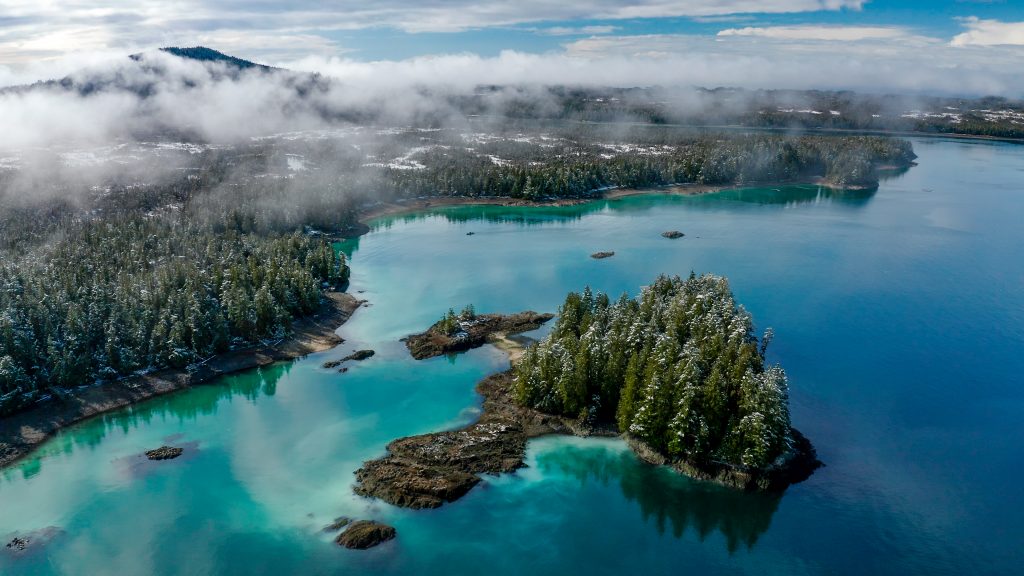

‘We need more protected areas’
Overfishing by industry is the single biggest threat to Kitasu Bay and the Kitasoo Xai’xais people, according to the MPA management plan. Fish resources are often opened for commercial harvest, even when it’s not clear that the stock is abundant enough to support it. Within Kitasu Bay, there are at least eight species regularly open for commercial harvesting — crab, prawns, sea urchin, rockfish, halibut, herring, geoduck and ling cod.
“The management of the fisheries do not take sufficient account of our traditional ecological knowledge, or our management practices and laws. Knowledge holders in Klemtu agree that there has been a significant decline in abundance of many, if not all, commercially targeted species in the Territory.”
Industry’s inclination to prioritize competition for quota has failed to incorporate Kitasoo Xai’xais law and values, the plan states.
“Short-term management policies and strategies allowing overfishing combined with changing ocean conditions have resulted in significant declines in the abundance of many species, including salmon, abalone, herring, duck, and more.”
“We had the worst year for salmon I’ve ever seen in my life. I’ve seen rivers that used to have thousands of fish have very few fish today. We need more protected areas,” Neasloss says.
“While tourism and recreational activities are an important economic driver for the community of Klemtu, these also need to be better managed, Neasloss says. The new MPA plan will incorporate new strategies and measures that stem from Kitasoo Xai’xais laws and practices.”
“The Nation requires all commercial operators and “quasi” commercial groups to sign a protocol agreement with the KXSA. This agreement governs the relationship of the parties as it pertains to the activities or the organization in the Territory,” the management plan outlines. “The agreement sets out the areas they can visit, when they can visit, how many people they may take, and other conditions of access and use.”
Neasloss understands that his Nation’s rights and obligations have led a natural path to the declaration of the MPA, but he hopes that others don’t see it as a threat, but an opportunity to work together, collaborate and “develop some of the strongest models and protected areas that exist.”
‘THIS IS RECONCILIATION’
Recently, the Nation signed a first–of-its-kind Memorandum of Understanding (MOU) with the province, to recognize their Guardian Watchmen as having Park Ranger authority. The pilot project was grounded in the understanding that Kitasoo Xai’xais and Nuxalk Nation Guardians are the most experienced to be stewarding, monitoring and enforcing laws within their territories.
The MPA will be monitored and cared for by the Kitasoo Xai’xais Guardian Watchmen, who will focus on maintaining ecological integrity of Kitasu Bay, protect fish and wildlife and at-risk ecosystems, protect cultural and archeological sites, protect historical, present and future harvesting and hunting areas, including the herring spawn on kelp fishery, and protect the wilderness values that support opportunities for ecotourism.
The Nation continues to engage and consult with stakeholders, industry and both levels of government around their “world-class management plan,” Neasloss says, based on deep local knowledge and the latest marine science.
“We welcome a lot of people to our coastal territory, and it needs to continue to be sustainable and safe. But we want people coming here to respect the local laws and customs, just like anyone else would,” says Haay-maas (Ernest Mason Junior) in a press release by the Nation.

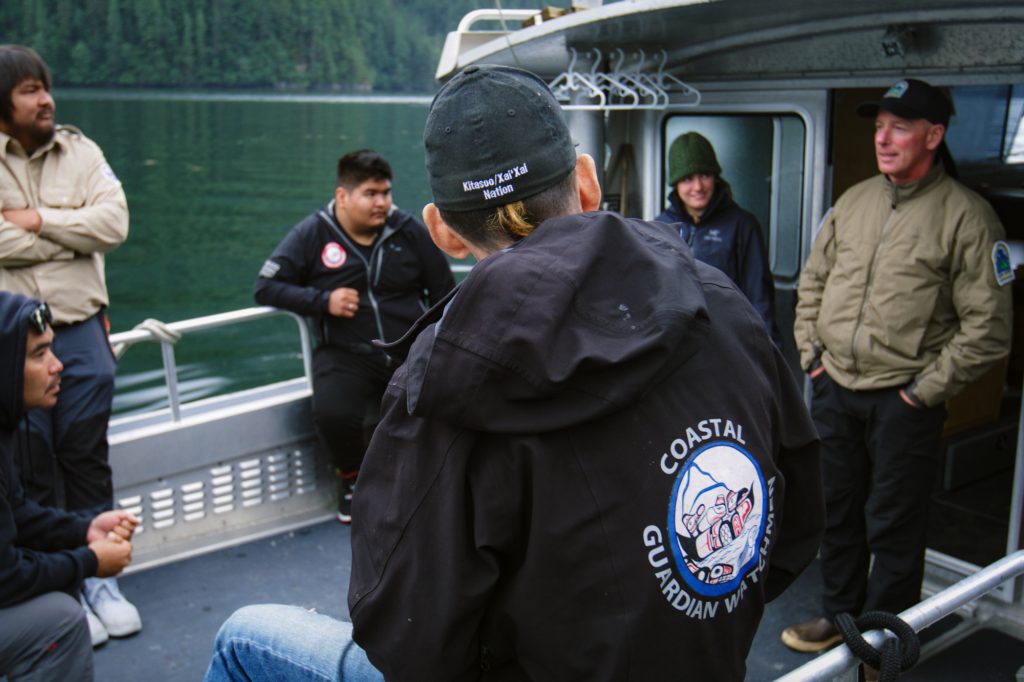
The MPA declaration follows Prime Minister Justin Trudeau’s 2018 announcement of the Reconciliation Framework Agreement, which included a commitment to establishing a network of Marine Protected Areas.
“New Marine Protected Areas such this one we have established in Kitasu Bay are able to advance Indigenous-led conservation and responsible management of natural and cultural resources” Neasloss says
“This is reconciliation,” Neasloss says. “Maybe, eventually down the road, we can develop protected areas, where it’s more collaborative,” Neasloss says. “This is reconciliation. If we find a way to collaborate with the government, good. In the meantime, we’re going to implement this management plan to ensure conservation and sustainability.”
Over the next three months, the draft management plan for the new MPA will be open for public review and comment and shared with other levels of government and affected parties.
“We look forward to advancing reconciliation with Canada and British Columbia, and to the implementation of the United Nations Declaration on the Rights of Indigenous Peoples in a meaningful way,” Neasloss says in the Nation’s press release.
